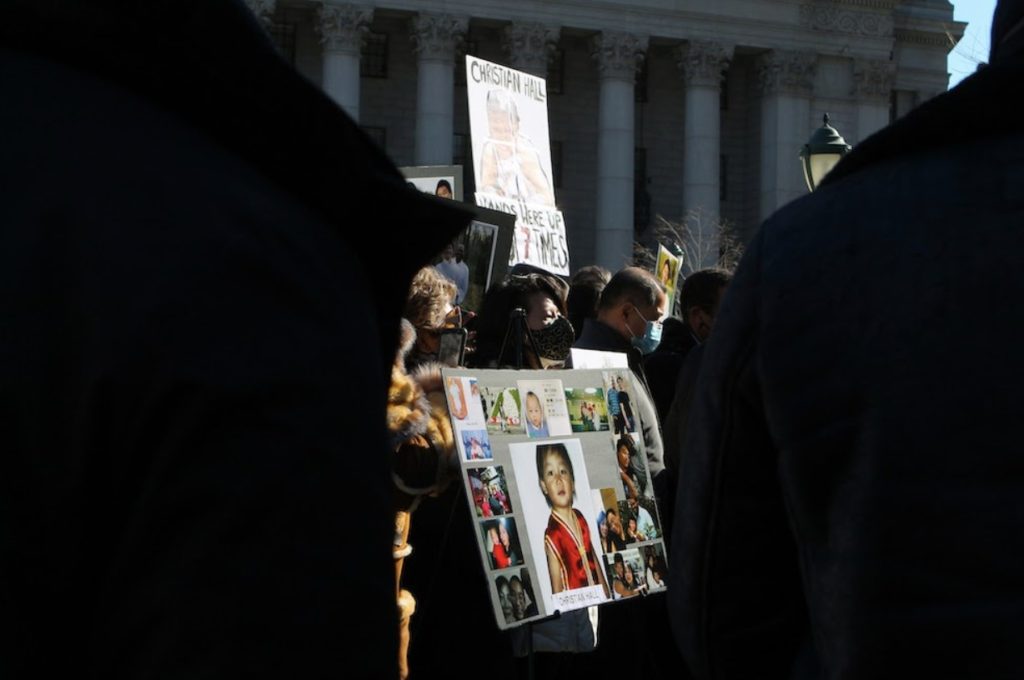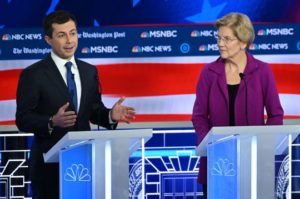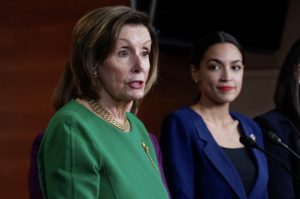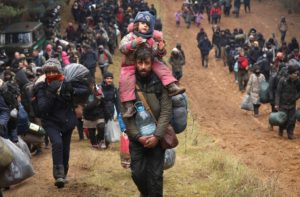
On February 16, Mayor Bill de Blasio announced that 500 more NYPD officers would be deployed to New York City subways in response to a national wave of vicious hate crimes targeting Asian Americans. The victims have been shoved to the ground, menaced, punched, terrorized, and on February 25, near where I live, stabbed in the back with a butcher’s knife half an hour after sunset.
On February 18, a story broke in the San Francisco Chronicle about a young Filipino man named Angelo Quinto, who, suffering from a mental health crisis in Antioch, CA, was killed by police called to his home by his concerned mother and sister. Two officers kneeled on the back of Quinto’s neck for nearly five minutes. Three days later, he was dead.
By February 21, I stood in front of the New York County Supreme Court in Foley Square, where the words “the true administration of justice is the firmest pillar of good government” are carved on the facade. Below, a small group was gathered, of municipal officials, press, demonstrators, and parents. One parent was Gwen Carr, the mother of Eric Garner, a man who was held down and choked to death by police in Staten Island in 2014. Carr was there because she had something terrible in common with two speakers at the rally – the parents of Christian Hall, a 19-year-old Chinese teenager who was shot by police while his hands were raised and empty, during a mental health crisis in Monroe County, PA.
Amidst grief and fear surrounding hate crimes, the murders of Hall and Quinto by police are less publicized by government officials or public figures, but the wounds still sting. They have made clear that while Asian Americans may not be overtly victimized by police violence as frequently as Black Americans, we are not immune. Brutality at the hands of police has proved no less deadly to its victims than hate crimes by the public. Can an expansion of law enforcement make Asians safe?
Asian Americans are facing two dire threats – merciless attacks from the public, provoked in part by misdirected animosity about COVID-19, and cruelty from police. In the cases of Christian Hall and Angelo Quinto, neither appeared armed, or threatening to the multiple officers who responded to each call. Hall was allegedly experiencing suicidal thoughts; Quinto was suffering from a flare of anxiety and depression. Police snuffed out the lives of these Asian men when they were most vulnerable. They have had every second chance, and Americans have seen law enforcement’s disregard for the lives of people of color proved time and again.
Expecting them to take sincere responsibility for our protection is a mistake.
Police Chief Magazine acknowledged the inefficacy of police departments in addressing (much less preventing) hate crimes in an article, The Hate Crimes Reporting Gap: Low Numbers Keep Tensions High. The piece reports that hate crimes are significantly underreported not only by victims, but by officers. Using the National Crime Victimization Survey, the Department of Justice found that “Between 2003 and 2006, suspects were arrested in just 10 percent of hate crimes. Between 2007 and 2011, that number decreased to a mere 4 percent.” Deputy Inspector Stewart Loo of the NYPD explained at a February press conference that “numbers are definitely underreported”, partially owing to the fact that the NYPD categorizes crimes as “COVID-related” only when the perpetrator explicitly mentions the virus. During many of these attacks, the assailant never speaks a word to the victim.
To test whether employing more cops leads to less crime, The Washington Post parsed data in a natural experiment from New York City in 2014 and 2015, during an NYPD work slowdown induced by conflict with Mayor de Blasio. Police were told “to perform only their most crucial duties” and “were significantly less likely to enforce minor legal violations”. Officers worked fewer foot patrols, and arrest numbers lowered. During the same period, “civilian complaints of major crimes – murder, rape, felony assault, burglary and grand larceny – actually declined during the slowdown.”
Michael German, a retired FBI special agent, published an analysis of the federal government and U.S. law enforcement’s failure to address white supremacy, externally and internally: “Since 2000, law enforcement officials with alleged connections to white supremacist groups or far-right militant activities have been exposed in Alabama, California, Connecticut, Florida, Illinois, Louisiana, Michigan, Nebraska, Oklahoma, Oregon, Texas, Virginia, Washington, West Virginia, and elsewhere. Research organizations have uncovered hundreds of federal, state, and local law enforcement officials participating in racist, nativist, and sexist social media activity”. In a 2006 FBI memo, the bureau warned that “white supremacist groups have historically engaged in strategic efforts to infiltrate and recruit from law enforcement communities.”
The undeniable link between American police and white supremacy, forced to light during the insurrection at the Capitol this January, constitutes clear danger to people of color and has polluted American law enforcement, making it difficult to imagine that the long-term solution to racial hatred and violence itself can come from police.
With the threat of harm coming from the general public and from police, it is hard to determine the correct approach for Asian Americans, their allies, or the government to increase safety. At the rally for Christian Hall, Gwen Carr addressed the crowd: “We can’t wait until it knocks on our door. We have to do something before it knocks at our door. We don’t want it at our door. So let’s make a pact to stand together.”
Tensions between Asians and Black Americans were high in the summer of 2020, while the Black Lives Matter movement experienced a widespread surge of participation and activity. Some Asians hesitated to lend their support because of ingrained anti-Blackness in East Asian communities, feeling, for whatever reason, that Black people had never stood up for them. I have seen some Black social media users say the same thing in reverse.
Now, resentment, fear, and misunderstanding remains pervasive, with some Asians turning anger towards Black Americans, whom they perceive as disproportionately being their attackers. The suspect arrested after the killing of Vicha Ratanapakdee, the 84-year-old Thai man shoved to the ground in San Francisco, was Antoine Watson, a 19-year-old Black man.
In February 2021, Andrew Wang wrote for the Washington Post that in response to assaults on elderly Asians, “A Subtle Asian Traits [a large Facebook group] post detailing the attacks prompted comments accusing Black Lives Matter supporters of indifference. On Reddit and Twitter, users have repopularized a 2010 article calling ‘black-on-Asian violence’ San Francisco’s ‘dirty secret.’”
In a piece for The Guardian this month, Oakland city councilmember Carroll Fife, who is Black, was quoted saying, “People want to have a Black villain and scapegoat”, and that “people are right and justified to feel beset upon because Asian folks are othered in America” – but that “you can’t fight racism with racism.”
Carr’s plea in front of the courthouse cuts to the heart of the matter. The driving force of each racial threat against Asian, Black, and all Americans of color is white supremacy, and we have collectively spent too long waiting for another group to somehow prove themselves worthy of our solidarity. If groups of people of color sit by while others suffer, the poison of white supremacy will engulf us. Asians must believe Black people about the horror and reality of police brutality and recognize that it threatens us too. It’s time for us to join each other’s movements. The only solution that addresses each source of our racial suffering is support, understanding, and love among people of color, and we must build these things with our families, among our friends, on social media, our schools, and in the places we walk around every day.
One way to start on this long path is to be ready to defend each other. The Center for Antiviolence Education (CAE), “NYC’s leading provider of comprehensive anti-violence work” conducts free online workshops that train attendees to de-escalate dangerous situations, and to use “physical and verbal self-defense techniques to respond to anti-Asian harassment and hate violence.” Simply showing up for each other can also help keep community members safe: SafeWalks is a “community safety initiative” founded in January 2021, where hundreds of volunteers respond to requests from individuals to walk with them safely to a destination. In response to the increase in attacks on Asians, SafeWalks has “initiated expansion into Chinatown.” Including being ready to walk alongside us, or learning to be an upstander (something covered in CAE’s workshops) there are many potential solutions to the knot of racist violence. We must make sure that the ones we advocate won’t come back and hurt the people we need by our side.



